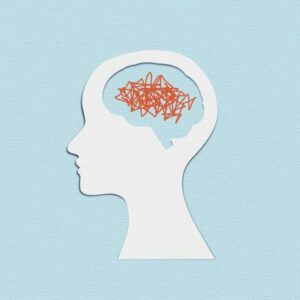If you’ve ever had a panic attack, you know how debilitating it can be. Panic attacks are characterized by intense fear and anxiety, which can make everyday activities extremely difficult. In this blog post, we will discuss panic attack management techniques and how you can do it. From self-help to medication, learn everything you need to know to get through these episodes without ending up in the emergency room.
Contents
What is a Panic Attack?

A panic attack is a sudden, intensely intense episode of fear, dread, and hyperventilation that can make you feel like you’re going to die. The episodes usually last for minutes but sometimes they can persist for hours or even days. They can come at any time but are most common in the middle of the night.
Panic attacks are caused by a mix of external factors – such as worry about an upcoming test or speech – and internal factors – like conflicts with your boss or feeling overwhelmed by life stressors. Most people experience at least one panic attack during their lifetime, but some people experience them more often than others.
Symptoms of a Panic Attack:
The hallmark symptom of a panic attack is fear or anxiety that peaks quickly and then subsides. Other common symptoms include heart palpitations, shortness of breath, feeling faint, dizziness, and goosebumps. Some people also experience nausea or numbness in their hands and feet. Occasionally, people may have a sense of unreality or a feeling that they are about to die.
Tips For Panic Attack Management
Panic attacks can be very scary and can cause intense feelings of fear and worry. The best way to manage a panic attack is to understand what causes them and learn how to recognize the signs. There are some basic techniques that you can use to manage a panic attack:
Know The Signs
One of the most important steps to managing a panic attack is learning how to recognize the signs, both physical and emotional. Typical signs of a panic attack include rapid heart rate, shortness of breath, trembling or shaking, sweating, feeling faint or dizzy, fear that you are losing control or going crazy, and/or chest pain.
Recognizing these signs can help to stop a panic attack in its tracks. It’s important to focus on your breathing and physical sensations as this can help distract you from the thoughts that are causing the panic attack.
Relaxation Techniques

Relaxation techniques such as guided imagery, progressive muscle relaxation, and deep breathing exercises can be very helpful for managing a panic attack. Learning these techniques ahead of time can help you to use them when a panic attack strikes.
Some of the related techniques that can be used include visualization, practicing yoga or tai chi, and listening to soothing music.
Talk To Someone
When you’re feeling overwhelmed and anxious, it can be helpful to talk to someone supportive and understanding. Talking to a friend or family member who can provide comfort and reassurance can make a huge difference in managing a panic attack.
If talking to someone doesn’t help, seeking professional help from a therapist or counselor can be beneficial. A professional can provide guidance and support as well as teach coping skills that may help in managing future panic attacks.
Keep Counting
Some people find that counting can help distract and calm them during a panic attack. Counting can be a simple but effective technique to manage a panic attack. Try counting backward from 10 or 20, focusing on each number as you go.
The key to managing a panic attack is recognizing the signs and understanding the various techniques available to help cope with the
Get Moving
Physical activity can be an effective way to manage a panic attack. Exercise releases endorphins that can help reduce stress and anxiety. Moving your body can also help to distract you from the thoughts that are causing the panic attack.
Getting outside in nature or engaging in a physical activity you enjoy can be especially useful for managing a panic attack. Even if it’s only for a few minutes, getting up and doing something can make a difference.
Stay In The Moment
When having a panic attack, it’s easy to get lost in worries about the future or regrets from the past. One of the most important things to remember is to stay in the present moment and be mindful of your emotions and physical sensations.
Being mindful can help to reduce the intensity of the panic attack and provide a sense of calm. Focusing on your breath or repeating a positive mantra can also help manage a panic attack.
Practice Self-Care

Self-care is important for managing anxiety and stress levels, which can help to prevent future panic attacks. Taking care of yourself through proper nutrition, sleep, exercise, and relaxation can make a huge difference in managing your emotions and feelings.
Knowing that you are taking care of yourself and investing in your well-being can help to reduce anxiety and the likelihood of experiencing a panic attack.
Avoid Stimulants
Stimulants such as caffeine and nicotine can increase anxiety levels and make panic attacks more likely. Reducing or eliminating these substances from your diet may help to reduce the number of panic attacks you experience.
It’s also important to avoid alcohol, which can worsen the symptoms of a panic attack. These substances should be avoided as much as possible to reduce the risk of having a panic attack.
Realize That It Will Pass
It’s important to remember that a panic attack will pass and that you are not in any real danger. Although this may be difficult to believe while amid an attack, remind yourself that it will end eventually.
By understanding what causes panic attacks and learning how to recognize the signs, you can take steps to manage them. With practice, you can learn how to prevent and cope with panic attacks to live a calmer, more peaceful life.
Conclusion
Panic attacks are an issue that affects many individuals. They can be caused by a variety of factors, such as stress, anxiety, or even physical ailments. It is important to seek assistance from a mental health professional to help manage and reduce the symptoms that accompany panic attacks. Medications may be necessary to provide relief from these episodes.
Additionally, lifestyle changes and cognitive-behavioral therapy can be utilized to help manage the thoughts and feelings behind panic attacks. By understanding why they occur and how to manage them, individuals can reduce the frequency and severity of their panic attacks.
For more information and guidance, please contact MantraCare. Anxiety is a common mental health condition characterized by persistent feelings of worry, fear, and apprehension. If you have any queries regarding Online AnxietyCounseling experienced therapists at MantraCare can help: Book a trial Anxiety therapy session


